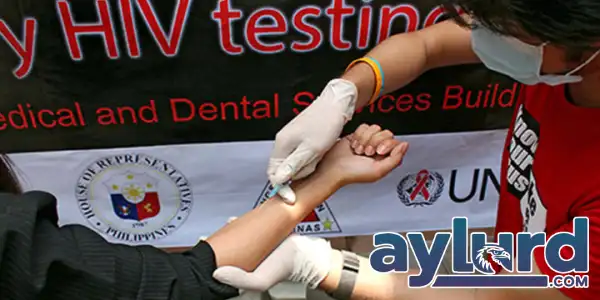The HIV Crisis in the Philippines: A Growing Public Health Challenge
The Philippines is facing an alarming surge in HIV cases, leading to public health concerns across the country. Find out what’s behind the growing epidemic and how it affects the Filipino population. 💉🩺
Overview of the HIV Crisis in the Philippines: Understanding the Surge
In recent years, the Philippines has witnessed a troubling rise in the number of HIV cases, making it one of the countries with the highest rates of new infections in the Asia-Pacific region. According to the Department of Health (DOH), the number of people living with HIV in the country has sharply increased, especially among young individuals aged 15 to 24. This surge has prompted public health experts to warn of an impending health crisis unless significant action is taken to address the issue.
Key Factors Contributing to the HIV Crisis
1. Rapid Increase in HIV Cases
- As of 2025, the Philippines has seen a 500% increase in HIV cases among youth in just the last few years.📊
- 57 new HIV cases are recorded every day, according to the Philippine HIV and AIDS Registry.
- This rapid rise is particularly concerning given that HIV is preventable through education, safe practices, and accessible healthcare.
2. Sexual Transmission: The Leading Cause
- Sexual contact remains the dominant mode of HIV transmission in the Philippines, especially among men who have sex with men (MSM).
- The increased prevalence of unprotected sex, compounded by a lack of awareness, is a significant driver of the epidemic. 🚫🛑
3. Stigma and Lack of Awareness
- The stigma surrounding HIV has led many individuals to avoid testing, delaying diagnosis and treatment.
- Misinformation and social taboos about HIV have created barriers to awareness and education.
- Public awareness campaigns are crucial in breaking the stigma and encouraging individuals to get tested and treated. 📣👩🏫
4. Inadequate Access to Healthcare in Some Regions
- Despite the availability of treatment and preventive services, access to healthcare remains limited in certain areas, particularly in rural and remote regions.
- The Philippine healthcare system struggles with disparities in access, especially in areas like mental health and HIV treatment services. 🏥🚨
HIV in the Philippines: The Role of Government and NGOs
Government Efforts
The Philippine government has launched several programs to combat the rising HIV epidemic, including:
- Free HIV Testing and Counseling – The DOH and local health units provide free testing and counseling to encourage more people to get tested.
- Antiretroviral Therapy (ART) – ART is available to those diagnosed with HIV, but coverage remains uneven in certain areas.
- Public Education Campaigns – The government and civil society organizations are working to educate the public about HIV prevention and the importance of safe sexual practices.
Non-Governmental Organizations (NGOs)
Several NGOs are actively working to combat the HIV epidemic, including:
- LoveYourself Inc. – An NGO that focuses on HIV awareness, prevention, and treatment, operating in major cities like Metro Manila.
- The Red Whistle – A group advocating for HIV testing, treatment, and creating a more inclusive and stigma-free society.
These organizations are essential partners in the fight against the growing HIV crisis, especially in terms of reaching marginalized communities.
What Can Be Done to Address the HIV Crisis?
1. Improve Public Awareness and Education
One of the first steps in addressing the crisis is increasing public awareness about HIV, its transmission, and prevention. Schools, communities, and media outlets should play a significant role in spreading factual information to reduce stigma.
2. Expand Access to Healthcare Services
Improving access to HIV testing, ART, and mental health support is critical. The government and NGOs must work together to ensure that these services are available and easily accessible in every region, especially rural areas.
3. Strengthen Anti-Stigma Initiatives
Encouraging a non-judgmental approach to HIV and mental health will help those affected feel more comfortable seeking treatment. The stigma surrounding HIV needs to be eradicated to ensure that individuals can receive the help they need without fear of discrimination.
Pros and Cons of Current Strategies to Combat HIV in the Philippines
| Pros | Cons |
|---|---|
| Increase in awareness programs and HIV testing availability | Insufficient funding for treatment programs |
| Collaboration with local NGOs for more extensive outreach | Access to healthcare remains limited, especially in remote areas |
| Efforts to reduce stigma through education and support services | The rise in cases is still outpacing preventive measures |
| Government action plans like providing ART for free | Discrimination against those living with HIV still persists |
Frequently Asked Questions (FAQs)
What is the current state of HIV cases in the Philippines?
- As of 2025, the Philippines records 57 new HIV cases every day, with a particularly alarming surge among young people aged 15-24.
How does HIV spread?
- HIV is primarily spread through unprotected sexual contact, sharing needles, and from mother to child during birth or breastfeeding.
Is HIV treatment available in the Philippines?
- Yes, antiretroviral therapy (ART) is available for individuals diagnosed with HIV. It is provided for free, but accessibility remains an issue in some areas.
How can I prevent HIV?
- Use condoms during sexual activity, get regular HIV tests, and avoid sharing needles. These practices can significantly reduce the risk of transmission.
Conclusion: A Call to Action in the Fight Against HIV
The HIV crisis in the Philippines remains a pressing issue, with youth and marginalized groups particularly at risk. While the government and various organizations have taken steps to combat the epidemic, there is still much work to be done to reduce the stigma surrounding HIV and provide accessible healthcare to all. Immediate action is necessary to reverse the trend and prevent further damage to public health.
As individuals, we all have a role to play in spreading awareness, practicing safe habits, and supporting those affected by HIV. Together, we can contribute to ending this crisis.
Disclaimer:
This article reflects information available as of June 2025. The situation surrounding HIV in the Philippines may change over time. Readers are encouraged to consult official sources, such as the Department of Health and local health units, for the most up-to-date information.

Ken Lurd, born Ken Martin, is a seasoned writer and content creator from the Philippines with over two decades of experience in storytelling, digital media, and creative strategy. Now in his 40s, Ken has built a solid reputation for blending real-life insight with engaging narratives that resonate with Filipino and global audiences alike.
From lifestyle blogs and social commentaries to thought-provoking essays and branded content, Ken’s work reflects depth, authenticity, and a passion for connecting with readers. Whether he’s writing under the name Ken Lurd or speaking at content workshops, his mission remains the same: to inform, inspire, and ignite meaningful conversations.
When he’s not writing, Ken enjoys local travel, coffee-fueled brainstorming sessions, and mentoring up-and-coming creators across the country.
Follow and Subscribe for Daily Updates!Facebook: AyLurdTikTok: @AylurdYouTube: AyLurd



